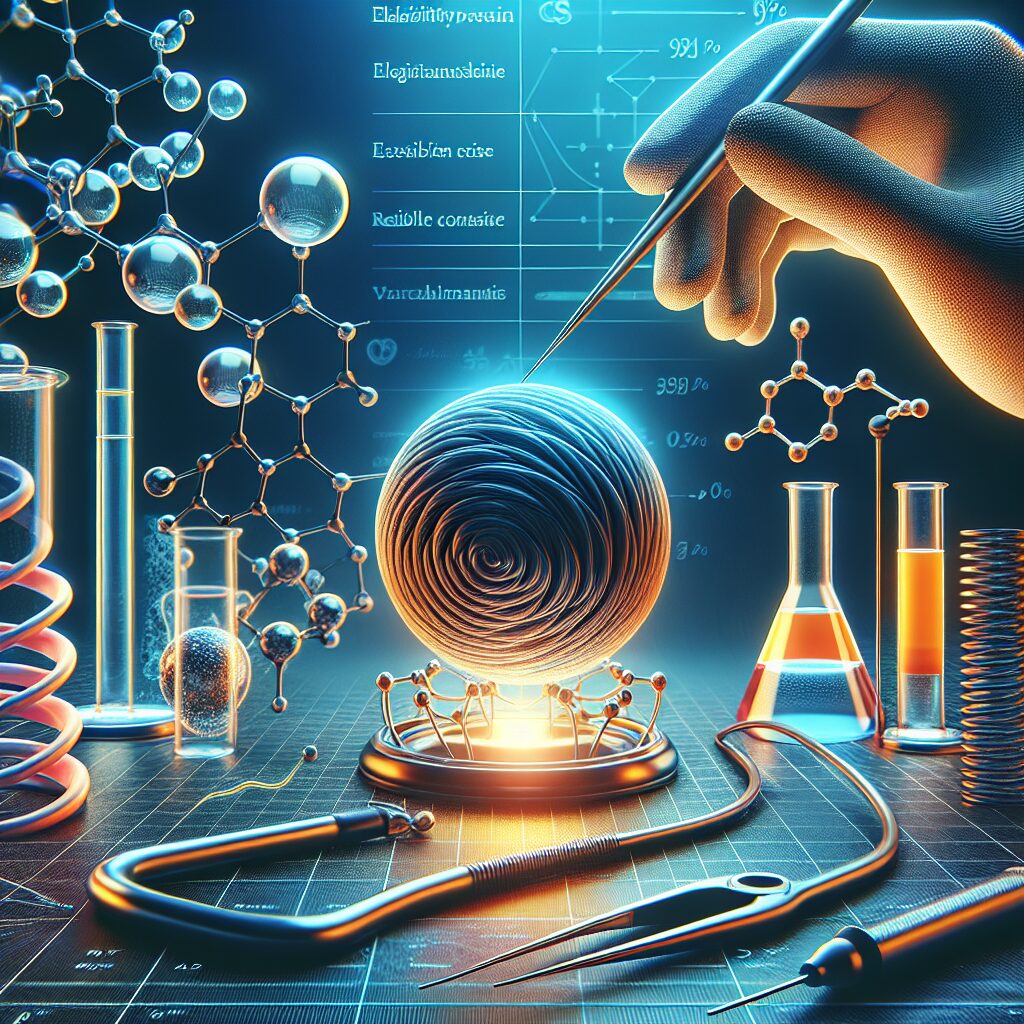Ball Material Science: Unveiling Rubber Secrets
Did you know that the ball material used in various sports has a significant impact on the overall game experience? In the realm of sports, the material composition of balls plays a crucial role in determining their bounce, durability, and performance. This brings us to the fascinating field of Ball Material Science, which delves into the secrets of rubber and its influence on the sporting world.
Rubber, which is the primary material used in many balls, possesses unique characteristics that make it ideal for sports equipment. Its elasticity allows it to absorb and store energy upon impact, creating a lively bounce that adds excitement to the game. Additionally, rubber’s durability ensures that balls can withstand intense gameplay and last for extended periods without losing their shape or performance. Understanding these material properties is vital for manufacturers and athletes alike, as it enables them to optimize ball design for enhanced playability and competitive advantage.
In the upcoming sections, we will delve deeper into the fascinating world of Ball Material Science. We will explore the role of rubber in different sports, such as basketball, soccer, and tennis, unravel the secrets behind ball material selection, and discover how advances in material science are shaping the future of sports equipment. So, grab your gear and get ready to uncover the intriguing world that lies beneath the surface of your favorite sporting equipment.
Key Takeaways
1. Rubber ball materials are carefully designed based on specific properties and applications, with factors like elasticity, hardness, resilience, and friction in mind. Understanding the underlying science of rubber materials enables their precise engineering.
2. The molecular structure of rubber materials plays a crucial role in their performance. Both natural and synthetic rubbers are made up of long polymer chains that can be crosslinked to enhance their strength and elasticity.
3. The ability of rubber materials to deform and bounce back is due to their inherent elasticity. This property is determined by factors such as the flexibility of polymer chains, the degree of crosslinking, and the presence of reinforcing fillers.
4. The hardness of rubber balls is determined by the Shore durometer scale, which measures the resistance of the material’s surface to indentation. Different applications require rubber balls with varying degrees of hardness to account for factors like durability and the amount of friction required.
5. The development of nanocomposite materials has opened up new possibilities for the production of high-performance rubber balls. By incorporating nanofillers, such as carbon nanotubes or graphene, researchers can achieve superior mechanical properties, improved resilience, and reduced friction in rubber ball materials.
What are the secrets behind Ball Material Science and the Unveiling of Rubber?
The Importance of Ball Material Science
Ball Material Science plays a crucial role in various industries, including sports, automotive, and manufacturing. Understanding the properties and characteristics of different materials used in ball production is essential for optimizing performance and durability. Among these materials, rubber stands out as a versatile choice, offering unique benefits that make it a popular option for many applications.
Exploring the Composition of Rubber
Rubber is a material renowned for its elasticity, resilience, and ability to withstand extreme conditions. It is composed of long polymer chains, which are responsible for its stretchiness and flexibility. The most common type of rubber is synthetic rubber, which is synthesized from petrochemicals through a complex manufacturing process. Different variations of rubber can be created by introducing additives and fillers to enhance specific properties.
The Secrets of Rubber’s Elasticity
Elasticity is one of the defining characteristics of rubber, allowing it to stretch and return to its original shape without undergoing permanent deformation. This property is due to the unique arrangement of the polymer chains, which have a coiled structure when the rubber is at rest. When external forces are applied, the chains uncoil, absorbing energy and providing resilience. Understanding the molecular structure and bonding of rubber is crucial for unlocking its elasticity secrets.
The Role of Material Testing in Ball Production
In the field of Ball Material Science, testing various rubber formulations is essential to ensure optimal performance and safety. Different tests, such as tensile strength, elongation, and hardness tests, help determine a rubber’s suitability for specific applications. These tests reveal crucial information about a rubber’s behavior under various conditions, enabling manufacturers to select the most appropriate materials for their products.
The Influence of Rubber Properties on Ball Performance
Ball performance heavily relies on the properties of the rubber used in production. Factors such as coefficient of restitution, grip, and durability are directly influenced by the material’s composition and characteristics. Manufacturers leverage advanced material science techniques to fine-tune these properties, optimizing performance in sports balls, reducing rolling resistance in automotive tires, and enhancing grip in industrial applications.
Unlocking New Frontiers with Material Science Research
The field of Ball Material Science continually pushes the boundaries of knowledge and innovation. Researchers are constantly exploring new materials, additives, and manufacturing techniques to improve ball performance, safety, and sustainability. By unveiling rubber secrets, scientists pave the way for future advancements in sports, transportation, and numerous other industries.
Guides and Tips for Ball Material Scientists:
- Investigate the effects of different additives on rubber properties to tailor materials for specific applications.
- Stay updated with the latest advancements in material science research to incorporate cutting-edge technologies into ball production processes.
- Conduct thorough material testing, including hardness, elongation, and tensile strength, to ensure optimal performance and durability.
- Collaborate with experts from various fields, such as chemistry and engineering, to leverage interdisciplinary knowledge and expertise.
- Explore sustainable alternatives to traditional rubber materials to minimize environmental impact while maintaining performance standards.
FAQs about Ball Material Science: Unveiling Rubber Secrets
1. What is Ball Material Science: Unveiling Rubber Secrets?
Ball Material Science: Unveiling Rubber Secrets is a field of study that focuses on understanding the properties, composition, and behavior of rubber materials used in the manufacturing of balls. It examines the scientific aspects behind rubber’s durability, elasticity, and friction.
2. Why is Ball Material Science important?
Ball Material Science plays a crucial role in various industries, including sports, automotive, manufacturing, and more. Understanding the science behind rubber materials allows manufacturers to enhance ball performance, design better products, and improve safety standards.
3. How does rubber affect the performance of a ball?
Rubber greatly impacts the performance of a ball. Its elasticity determines the ball’s bounce, while its coefficient of friction affects its grip and interaction with surfaces. The specific composition of rubber and its curing process also influence factors such as durability and resistance to wear.
4. Can you explain the process of rubber vulcanization?
Rubber vulcanization is a process where raw rubber is chemically treated with sulfur or other curatives under heat and pressure. This process alters the molecular structure of rubber, making it more durable, stable, and less susceptible to changes in temperature. Vulcanized rubber is widely used in ball manufacturing due to its desirable properties.
5. What are the advantages of using rubber in ball production?
Rubber offers numerous advantages for ball production. It provides excellent resistance to abrasion, impact, and fatigue, resulting in durable balls that can withstand repeated use. Rubber’s elasticity allows for optimal bounce and enhances the ball’s performance in various sports.
6. How do different rubber compounds affect ball performance?
Different rubber compounds, such as natural rubber or synthetic rubber blends, can significantly affect ball performance. The choice of rubber compound can impact characteristics like grip, bounce, and spin. Manufacturers carefully select and blend rubber compounds to achieve the desired performance for specific ball applications.
7. What testing methods are used in Ball Material Science?
Ball Material Science relies on various testing methods to evaluate rubber properties. These include tests to measure hardness, elasticity, coefficient of friction, and abrasion resistance. Advanced techniques such as atomic force microscopy and dynamic mechanical analysis are also employed to analyze rubber behavior in more detail.
8. How does weather affect rubber balls?
Weather conditions can have an impact on rubber balls. Extreme cold temperatures can cause rubber to harden, thereby affecting its elasticity and bounce. Conversely, high heat can soften rubber, altering its performance as well. Manufacturers consider these effects during ball design to ensure optimal performance across different climates.
9. Are there eco-friendly alternatives to traditional rubber materials?
Yes, there are eco-friendly alternatives to traditional rubber materials. Manufacturers are exploring options such as recycled rubber, bio-based rubber, and even innovative materials like thermoplastic elastomers. These alternatives aim to reduce reliance on petroleum-based rubber and minimize the environmental impact of ball production.
10. How does Ball Material Science contribute to sports innovation?
Ball Material Science plays a vital role in sports innovation by enabling the development of superior ball designs. Through understanding rubber properties and interactions, researchers and manufacturers can enhance ball performance, optimize aerodynamics, and improve player safety. This continuous research fuels advancements in sports technology.
Final Thoughts on Ball Material Science: Unveiling Rubber Secrets
Ball Material Science offers fascinating insights and knowledge about the secrets behind rubber and its impact on ball performance. It showcases the innovative drive of scientists and manufacturers to push the boundaries of ball design and create better products for various applications.
Understanding the intricate relationship between rubber composition, manufacturing processes, and the resulting ball behavior allows for continuous improvement and opens doors to new possibilities. The ongoing research in Ball Material Science promises to enhance the enjoyment and performance of sports, increase the lifespan of industrial equipment, and create eco-friendly solutions for the future.




